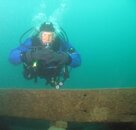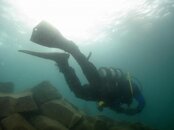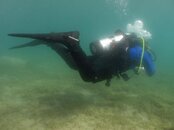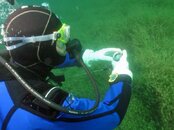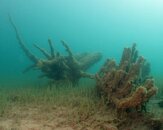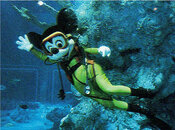Welcome to SB, Token,
I agree with Hawkwood and Jim Lapenta. Remember that diving tables were derived for dives which begin and end at sea level. I your case you will be descending, the surfacing to a pressure which is less than sea level. As a result of the decreased atmospheric pressure on your body at the surface, the nitrogen bubbles will have a stronger tendency to come out of your tissues than they would if you were at sea level. At the elevation of Minnie this approximately equates to a 20 foot penalty to your depth for many recreational depth dives - that is, treat a dive to 70 feet as though it were a dive to 90 feet, etc.. Most computers will do this for you, however, be sure you know how your computer works. Mine, for example, will automatically sense the elevation and adjust for it, but only if the computer is activated prior to getting wet. Also, if you drive from Calgary to Minnie you will already be over-saturated with respect to nitrogen thanks to the difference in elevation between the two sites - this over-saturation is a condition which your computer and tables will not account for. Many divers opt to take a few lazy hours in the area to decrease their N2 levels. Finally, cold can complicate DCS. If you start a dive warm and end a dive warm, you are fine. If you start a dive cold and end a dive cold, you are fine. If you start a dive cold and end a dive warm, you are fine. However, if you start a dive warm and end a dive cold you are at an elevated risk of DCS because at the beginning of the dive your tissues were well-perfused (i.e., you had good blood flow) and those tissues would have been subject to nitrogen loading as you descended. However, when you get cold the perfusion of many tissues in your extremities is hampered, resulting in a decreased ability to off-gas as you ascend. As a rule of thumb I take it easy on cold elevation dives, preferring to not "red-line" my N2 loading.
Have some great dives.
-Crush




